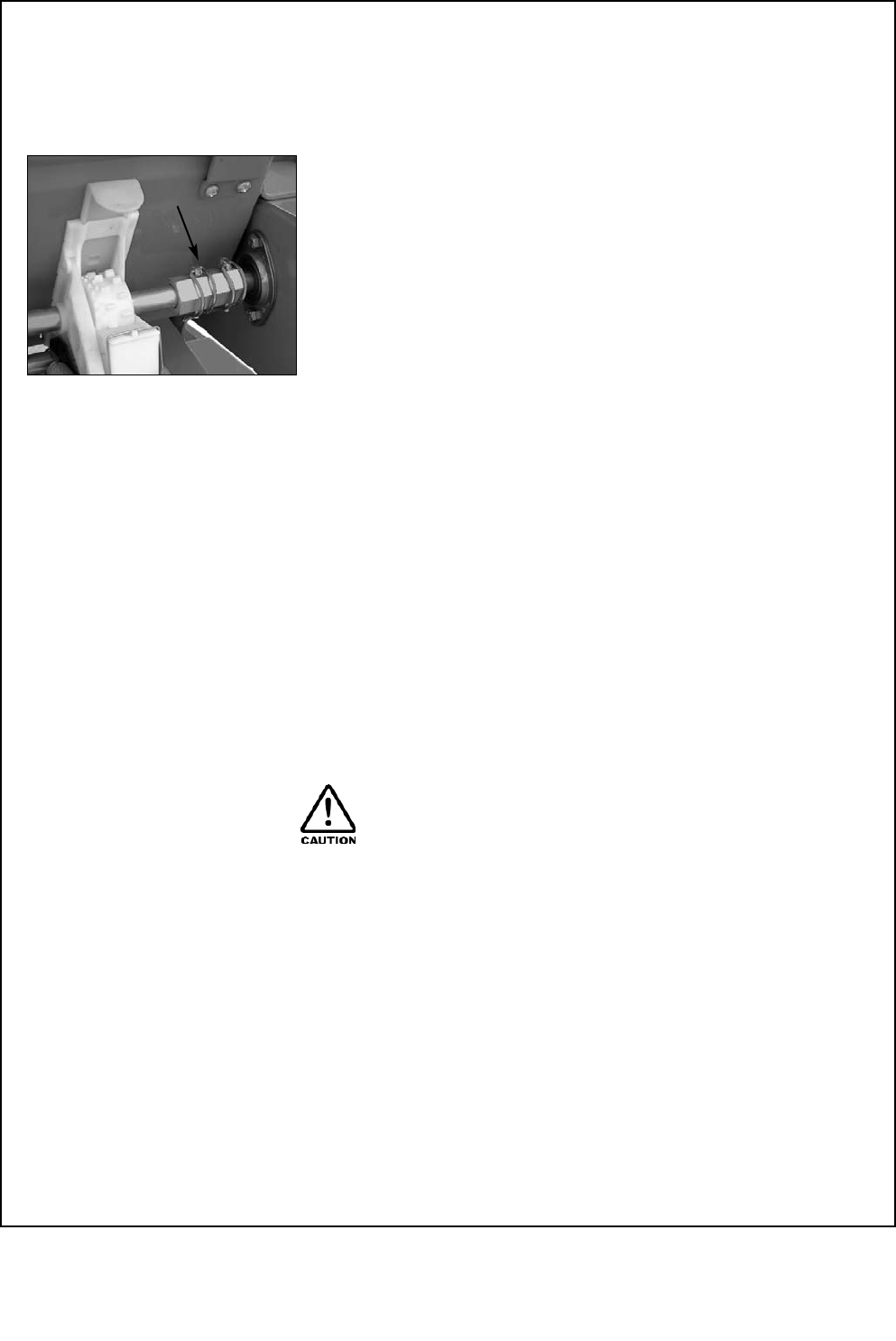
21
Basic Calibration Procedure
(Continued)
Sowing Small Seeds
Calibration with Disconnected Agitator Shaft
The fine seed metering wheel used in Duncan Drills is especially
well suited for sowing small seeds such as rape. Due to the
intensive action caused by the agitator the seeds can adhere to
each other, or be damaged, causing irregular
sowing/germination.
Therefore it is recommended that when sowing small
seeds, especially oil seeds and thin shelled seeds, the drive
to the agitator is disconnected. To do this remove the lynch
pin (1) (Fig 12).
Deviations between the calibrated and actual seed rate can
occur when residual dressing agent sticks to the bottom flaps
and thus slows the flow of seed. Before beginning the actual
calibration test fill the calibration trays by turning the crank
handle at a high speed around the 90 setting on the gearbox
scale. This will cause an immediate buildup of the dresssing
agent on the flaps. Return the contents of the calibration trays to
the seed box and proceed with the actual calibration. Due to the
residue buildup on the flaps your calibration will now reflect
accurately the required seed rate.
It is advisable with small seeds to use the 1/20 hectare method
for your calibration, thus cutting down on weighing errors.
Note: Remember to reconnect the agitator shaft as required for
other seeds, otherwise the consistency of seed rate will be
affected.
Fig 12
Caution: When resetting the metering wheels on
the seeder shaft
Care should be taken when tightening the grub screws
on the fine seed wheel
(Page 20, Fig 10/3)
. Adjust the
grubscrew until the movement of the metering wheel just
stops, then tighten no more than 1/8 of a turn.
Do not overtighten as this can result in breakages while
operating and may render the warranty on these units void.
Pt. No. 67372
Issue 0806
1


















